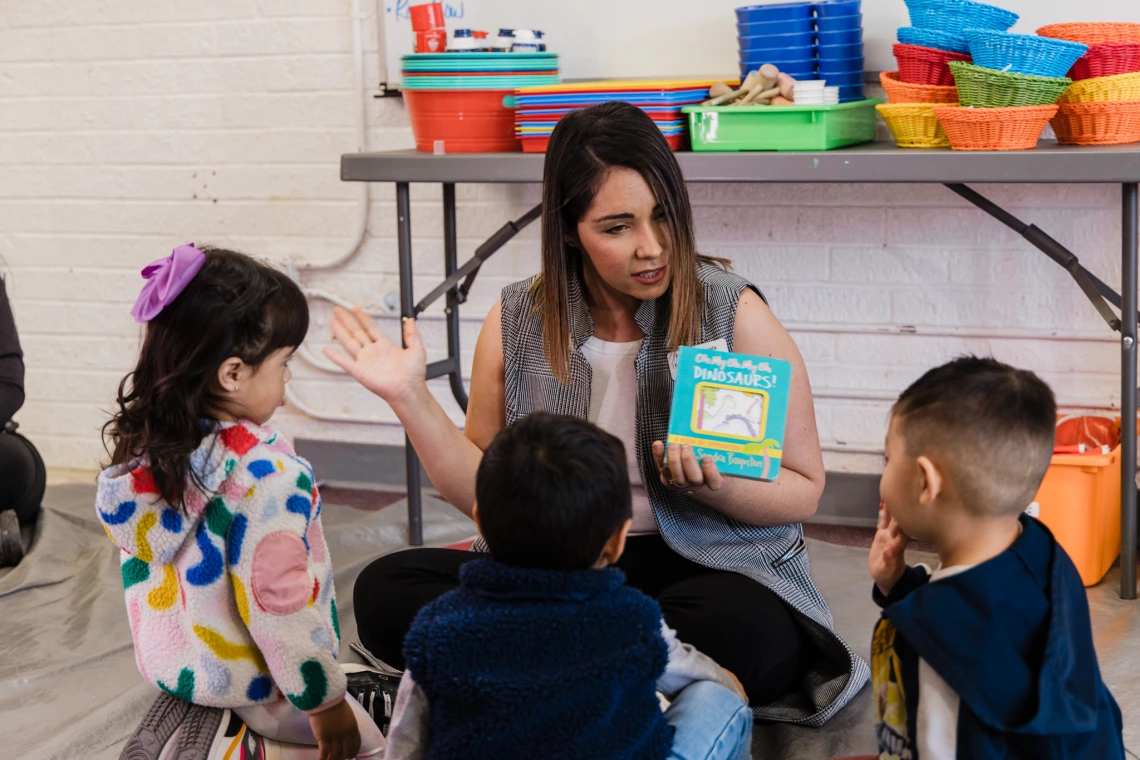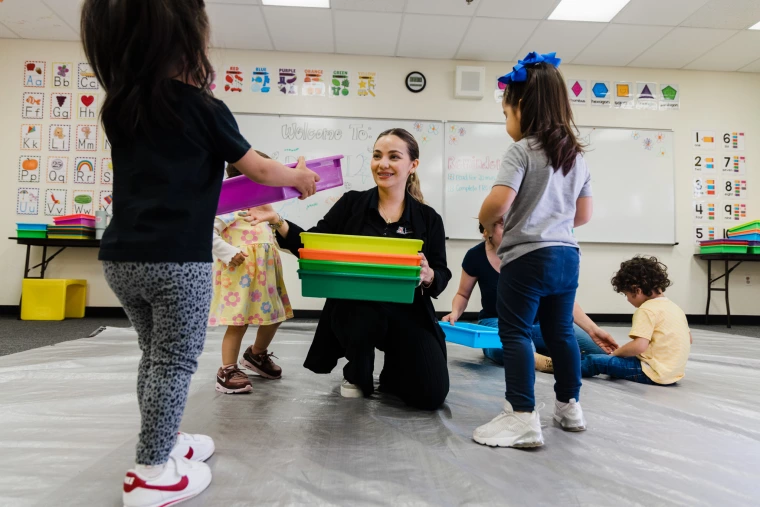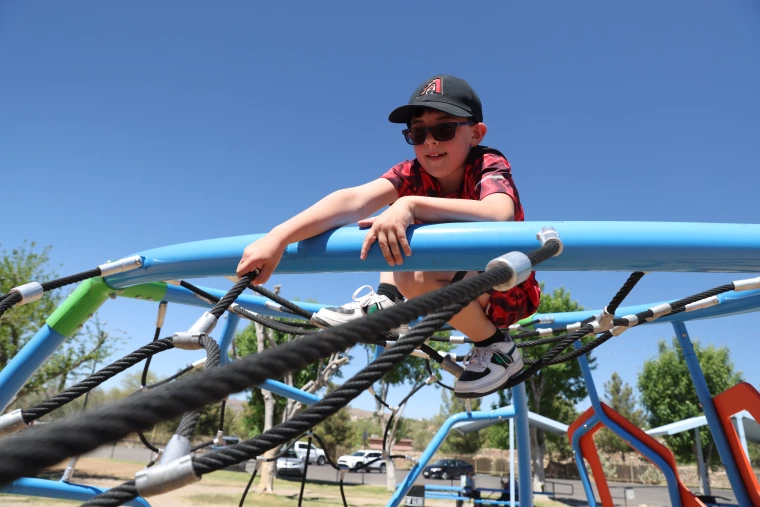It's elementary: Tips for a smooth back-to-school transition

Back-to-school season is upon us, and it can be a very stressful time for kids – and their caregivers. Whether it means seeing a little one off to their first day of kindergarten or easing an older child back into the school-day routine, the Norton School of Human Ecology’s Melissa A. Barnett has advice to help families support their kids through the transition.
Acknowledge start-of-school anxiety.
It’s not unusual for the start of a new school year to inspire feelings of anxiety or even fear, Barnett said. Youngsters may be going to school for the first time, or they may be moving from a preschool environment to kindergarten. Even changing teachers within the same school can cause a case of nerves.
“It may not be obvious if your child is nervous about starting school,” she said. “Sometimes kids have a hard time putting their feelings into words – especially little kids.”
Barnett said that it’s important to talk children through big transitions, even if they don’t show outward signs of nerves. Helping them imagine what the new year will be like may help ease any anxiety, and it can give them an opening to discuss any worries they may have.

“Talk about what the transition might look like,” she said. “How the classroom might be different, how the routine may change, which classmates they may know and who they might make new friends with. Helping them imagine themselves in the new situation is a way to make it less scary – and it may give them a chance to tell you if they’re feeling nervous about something in particular.”
Kids aren’t the only ones who can experience back-to-school anxiety, either. Barnett said that caregivers can help their children by being open about their own worries.
“Even really young kids pick up on adults’ emotional cues,” she explained. “So if the parent is feeling anxious, that’s probably going to affect the child. It’s important not to play down anyone’s feelings, but to acknowledge them and talk about strategies to help overcome those challenges.”
Prepare for potentially challenging behavior at home in the first weeks of the school year.
The early days of the school year can be rough for parents. Barnett explained that there’s a reason for that – kids may need to let off steam as they adjust to classroom expectations.
“For some children, it can feel that they’re holding back during the school day,” she said. “They have all these rules at school, and when they get home, they need a release. That can mean some very difficult behavior.”
Barnett said that in a lot of cases, the best course is try to be patient as kids adjust to being back in school.
“Though it may be very frustrating that you’re experiencing those difficult behaviors, keep in mind it’s because you’re the safe space,” she said. “You may need to just ride it out for those first few weeks while they adapt.”
Caregivers may also need to modify some of the routines at home to meet the demands of the new school year.
“Maybe your kids are just hangry at the end of a long school day and they need a snack earlier,” Barnett said. “Maybe they need unstructured free play when you get home before getting into homework or whatever the next activity is. Try to approach the situation with flexibility while you establish a new routine that works for everyone.”

Be more specific than “How was school?”
According to Barnett, children can have a hard time answering abstract questions like “How was your day?”. If you want more than a one-word answer (“Fine.”), Barnett suggests getting more specific.
“It’s helpful for caregivers to be familiar with the general routine of the child’s day so they can ask better questions,” she said. “If you say something more specific, like ‘What book did you read during story time?’ or ‘What did you make in art today?’ that can prompt kids to be more forthcoming because they have something concrete to talk about.”
She explained that it’s also important to follow where the child leads once you get them talking.
“You may want to know about what they’re learning in the classroom, but they may want to talk about what happened at lunch or recess,” she said. “Try to follow them where they want to go. That gives them the message that they can talk at home about what’s happening at school, about what’s important to them.”
Keeping the after-school conversation playful is another strategy Barnett suggested.
“Try making up something crazy that couldn’t have happened – Did you ride the elephants at school today?” she said. “Keeping it playful can help kids open up about what actually did happen because they aren’t feeling pressure to give a ‘right’ answer.”
It’s also helpful to remember that talking with kids about their school lives shouldn’t feel like an interrogation.
“Talking about their day can be a chance to help build a two-way relationship that keeps them connected at home,” Barnett said. “You can build these kinds of conversations into your family routine. Maybe everyone – including the grown-ups – shares their favorite thing about their day in the car on the way home, or around the dinner table, or at bedtime.”
Approach the teachers with an attitude of respect.
Many parents worry about developing a good working relationship with their children’s teachers. Barnett says the key is to approach teachers with respect for their training and expertise.
“You know your kid really well; the teacher knows kids really well,” she said. “It’s an opportunity for a strong partnership between caregivers and teachers, one where you’re working together to help your kid be successful.”
Barnett said it’s important to take advantage of the structures the school already has in place to facilitate communication between parents and teachers.
“Whether it’s a back-to-school night, a classroom app, or an email system, do your best to make use of what’s already available,” she advised. “And you can also ask the teacher their preferred mode of direct communication.”
She said that it’s helpful to approach the relationship between caregivers and teachers as a collaboration.
“It’s helpful to remember that in most cases, everyone has your child’s best interests in mind,” she said. “Starting from a place of respect, support and curiosity helps build a relationship that will – hopefully – ensure that your child can flourish.”
